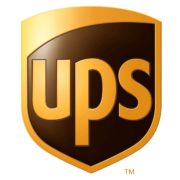The True Value of Free Shipping
More and more on-line retailers are establishing loyalty programs to gain critical information about a shoppers likes and dislikes. This data is used to market directly to those shoppers who may want, but may not necessarily need that retailers products. After all isn’t it the retailers job to entice the shoppers by constantly feeding them product information? The result, expect more pop-ups and e-mails my friends! In return for this wealth of information, the retailers are offering “free” shipping which as we all know has become, shall we say, the “standard” for on-line retailers.
The real question however for these online retailers will be as their actual shipping costs rise, (and they are rising continually), how will they manage to continue to offer “free” shipping to their customers. The answer is and has always been, “the devils in the details.” And what we mean by that is the retailers must have a wealth of statistical data gleamed from their actual “real time” shipping data to track their costs on an-on-going basis. Without this data, and more importantly the ability to properly and comprehensively analyze that data, the retailers cannot be assured that their shipping costs aren’t eating into their profits. Many have found out too late that is exactly what had happened to them.
In addition, the retailers must be willing to continually monitor service offerings as well as shipping costs that are available from various shipping companies who compete with the retailer’s current service provider(s). While this sounds logical, you would be amazed at how many companies are “locked” into their current service providers and are not aware that shipping options are constantly changing and therefore need to be constantly analyzed.
Is single sourcing the best option for controlling freight costs, perhaps. Many shippers refuse to “put all their eggs in one basket”, yet others have done so successfully for many years. Perhaps it makes sense to “share” their annual packages with two or more carriers. If that’s the approach, what percentage should each carrier receive? How do these competing carrier’s service levels, rates, ancillary charges, rules and regulations stack up against the incumbent carrier(s)?
The reality is the right answer can only be reached after comprehensive analysis has been done to determine which carrier(s)selection is best. Then once that selection has been made, it must be tested and challenged year after year to make sure it’s still the best option. One and done routing decisions never work; not fully understanding continually changing carrier pricing levels will not work either. And more importantly, if the retailer does not have the ability to perform these studies, and make solid business decisions based on this information, they will certainly be “leading” from behind.







